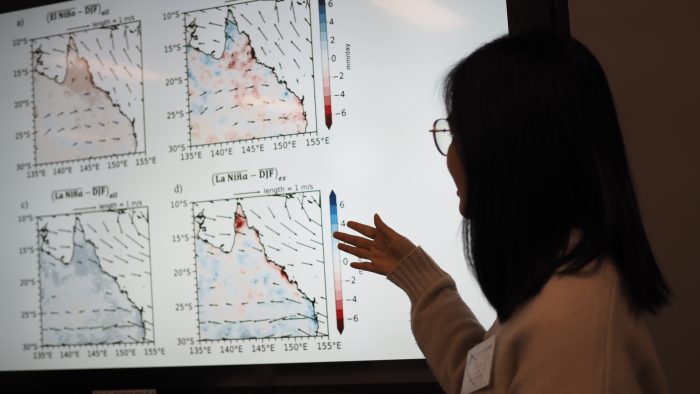
El Niño is often associated with hot and dry conditions and reduced rainfall for much of mainland Australia.
However, new research in the Journal of Climate has found that for regions of Northern Australia, another important climate pattern could bring vital rainfall relief during an El Niño.
This occurs because of the unique way that climate patterns interact with each other in this region of Australia.
The research found a significant interaction between the El Niño-Southern Oscillation and Madden-Julian Oscillation with important implications for rainfall. Researcher Thi Lan Dao identified that research had been conducted on both climate patterns separately, but a significant gap existed in how the two patterns interacted with each other.
“In this research we found that during El Niño years, the rainfall response to the Madden-Julian Oscillation is two times stronger than in La Niña years” says researcher Thi Lan Dao.
“This means that during El Niño years, which are typically drier than average, the Madden-Julian Oscillation can have a big impact on whether much needed rains occur in this region. This is really important for industries and communities that rely on rainfall, like agricultural areas” says Thi Lan Dao.
The research also found that in some coastal areas of northeastern Australia, rainfall shows the opposite response of what is expected from the El Niño-Southern Oscillation. That is, La Niña periods were drier than average and El Niño periods were wetter than average.
“In general, there was a large geographical variation in how the El Niño-Southern Oscillation, the Madden-Julian Oscillation, and their interaction impacts rainfall across the region” says Thi Lan Dao.
“What this tells us is that we can’t expect climate processes like the El Niño-Southern Oscillation or Madden-Julian Oscillation to have the same broad impact everywhere. We need location specific information about these interactions to understand the possible impacts on communities.”

Thi Lan Dao’s next project involves addressing another important research gap – capturing and analysing finer data that can give more relevant information for local communities.
“This next project will help us understand why some areas in Northeast Australia show the opposite rainfall responses to the El Niño-Southern Oscillation and the Madden-Julian Oscillation to what we would expect. We are particularly looking at how this affects agricultural areas, such as the Queensland coast where more than 95% of Australia’s sugarcane is grown”.
The full paper is available now in the Journal of Climate: Multi-scale influences on rainfall in Northeast Australia.
